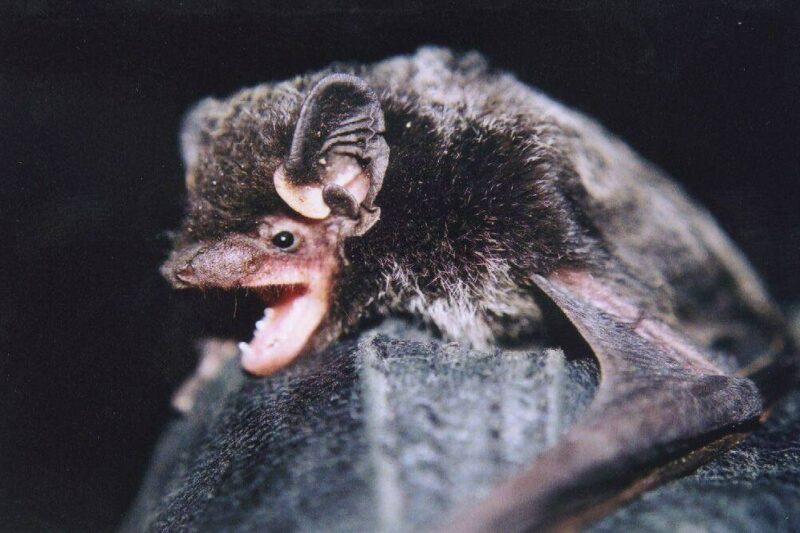The high-pitched tweets, trills and chirps sound like the chorus of birds in the treetops.
But the songs documented in new research emanate from sites including abandoned mines in British Columbia, and the voices belong to silver-haired bats.
Authors of a new study say that while bats are well known for using sound to echolocate prey and navigate around objects, silver-haired bats have now been identified as only the second such species in North America that has been documented as singing.
Cori Lausen, director of bat conservation with the Wildlife Conservation Society, is one of the authors of the study published in December in the Wildlife Society Bulletin.
READ MORE: Researchers composing scientific symphony of B.C. whale song data
It’s a “neat and rare discovery for North America,” said Lausen, who is based in Kaslo, B.C.
“The song patterns were relatively consistent with each song phrase consisting of a lead call, followed by a droplet call, and finishing with a series of multiple chirp calls,” the study says.
Most of the recordings were made in southern B.C., including from mines in the West Kootenays in the southern Interior, although the research that spanned a decade also took place in several U.S. states.
It says that although the function of the songs is unknown, the researchers believe it is related to courtship or mating. Alternative functions couldn’t be ruled out, however.
Lausen said that previously only the Brazilian free-tailed bat, found mostly in the U.S., had been known to sing, something the study defines as “acoustic vocalizations with distinctive syllable types in series or in complex motifs.”
READ MORE: In a West Kootenay forest, scientists create habitat for bats
Bats typically produce pulses of sound and listen to the echoes to find food and avoid crashing into things.
But Lausen said some of the sounds emitted by silver-haired bats in B.C. can “only be described as a song.”
In one recording, Lausen said, two bats can be heard echolocating as they fly near each other, before one starts to sing.
“The fact that this recording starts with two bats and one is singing might indicate that the singing bat is trying to attract the other bat, but that this does not work,” she said.
“Or it might be that the singing bat is actually producing a song that is telling other bats to stay away.”
Lausen said in some situations lone silver-haired bats were recorded singing, leaving researchers puzzled.
“We don’t know if there is another bat a long way off that it’s trying to communicate (with) or is it just flying around singing to his little heart’s content trying to hopefully pick up a mate somewhere,” said Lausen.
Lausen said it took several years to establish which species was singing.
It was narrowed down to silver-haired bats when the researchers started catching them in winter at locations where bats were hibernating, and some of the captured animals showed signs of mating, something unexpected and never before documented in the species, said Lausen.
The study says more than half of the documented singing was recorded in winter.
“We were able to sort of piece it together that this is probably what’s happening that they’re using this song to attract mates,” Lausen said.
So, how well do the bats sing?
The high-pitched sounds can’t be heard by human ears, and the recordings were captured by what Lausen calls a “bat detector.”
She said she had to take all the recordings and slow them down ten-fold to allow humans to hear.
“I guess I’m a little biased, but they do sound really lovely,” said Lausen.
Nono Shen, The Canadian Press
* * * * *
Plan your adventures throughout the West Coast at westcoasttraveller.com and follow us on Facebook and Instagram @thewestcoasttraveller. And for the top West Coast Travel stories of the week delivered right to your inbox, sign up for our weekly Armchair Traveller newsletter!











 Baby boom of 59 pups helps endangered Vancouver Island marmot toward recovery
Baby boom of 59 pups helps endangered Vancouver Island marmot toward recovery